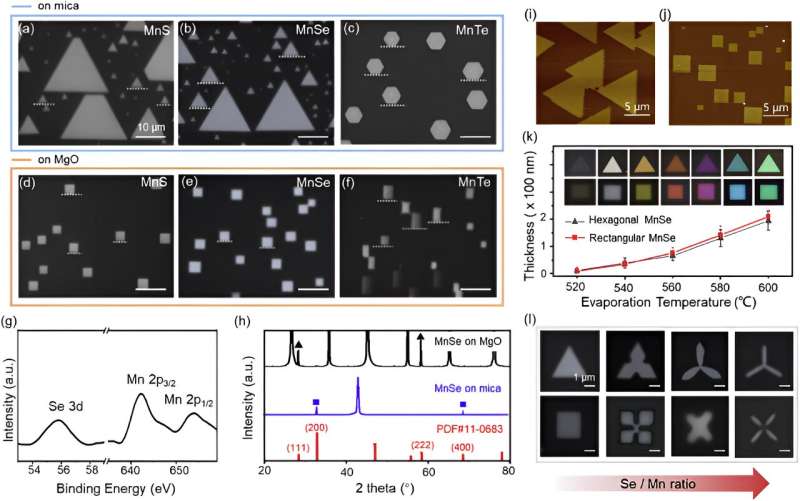This article has been reviewed according to Science X's editorial process and policies. Editors have highlighted the following attributes while ensuring the content's credibility:
fact-checked
proofread
Unveiling the singular symmetry in facet-engineered 2D materials growth

In a crystal, facets refer to the planes composed of different atom arrangements. In nature, crystals tend to form a polyhedral shape due to multi-facets, and realizing a single-facet in a crystal is very challenging. Nonetheless, in a study published in Advanced Powder Materials, a group of researchers from China outlined a new synthesis approach that can synthesize large-area 2D materials with atomic thickness and expose single-facet at the same time.
"The exposed facet is crucial since it determines the surface structure and property of 2D materials," explains first author of the study Jingwei Wang, Shuimu Scholar at Shenzhen International Graduate School, Tsinghua University.
"Previously, most researchers used wet-chemistry methods to synthesize nanoparticles with specific facets. However, these samples suffer from small surface area, low quality, and the presence of multiple facets which is not suitable for studying the identical properties of one certain facet."
The study's multidisciplinary team of scientists found that using a three-fold symmetric growth substrate, such as mica, yields 2D MnSe crystals with a (111) facet. Conversely, on a two-fold symmetric substrate like MgO (100), 2D MnSe crystals with (100) facets can be grown. These 2D MnSe flakes not only exhibit large-area surfaces of single-facet but also possess high crystallinity and ordered domain orientation. They further prove that these samples are ideal candidates for studying facet-dependent properties (e.g. electrocatalysis).
"Until now, revealing the relationship between crystal facet and properties [has been] challenging since the nanomaterials usually expose multi-facets. Our approach shows that the single-facet can be controlled in atomic thin 2D materials on specific growth substrates," says Bilu Liu, the corresponding author of the study. "We hope that our results encourage scientists to continue investigating facet-engineering of 2D materials for desired properties and applications."
More information: Jingwei Wang et al, Facet-engineered growth of non-layered 2D manganese chalcogenides, Advanced Powder Materials (2023). DOI: 10.1016/j.apmate.2023.100164
Provided by KeAi Communications Co.





















